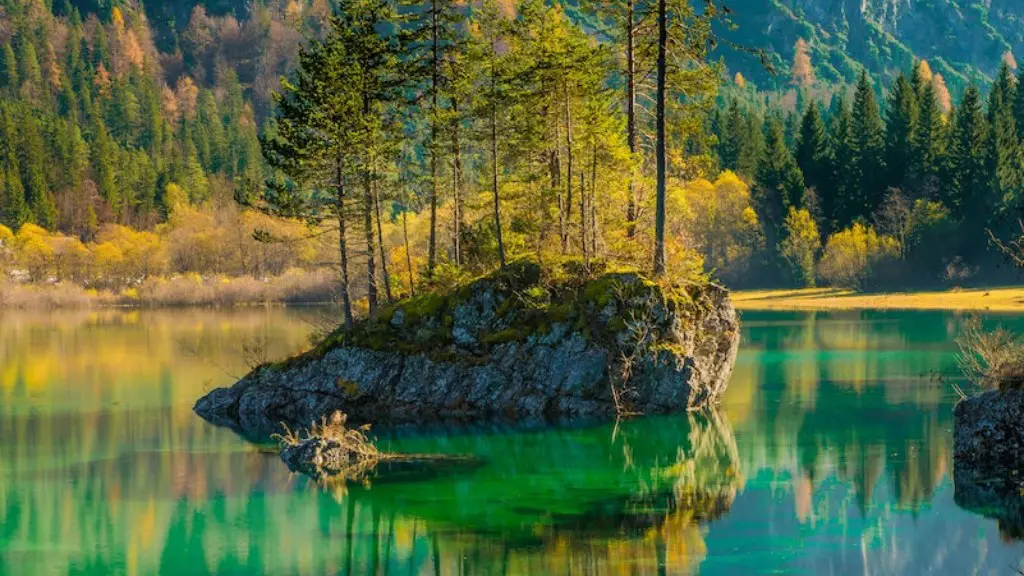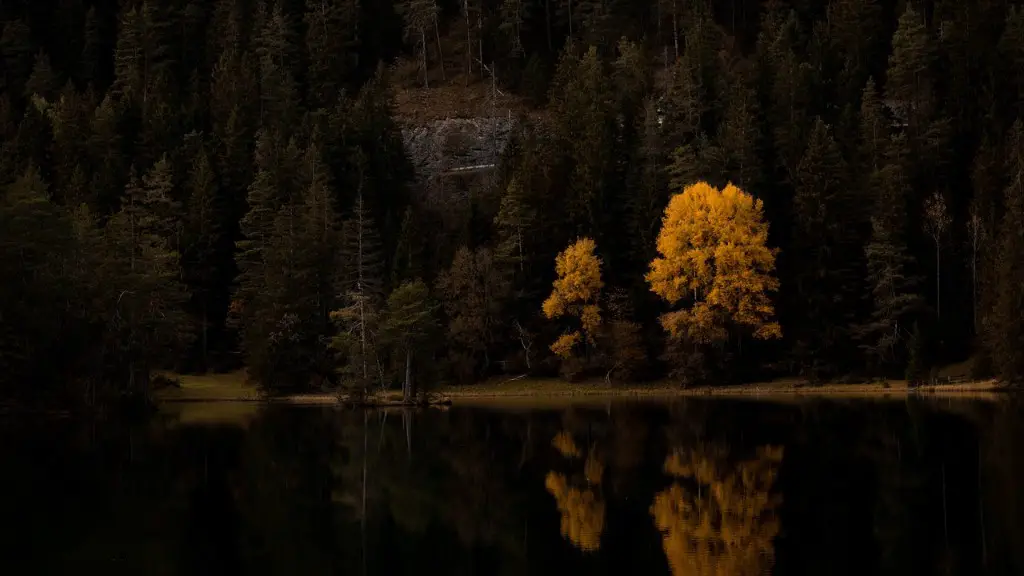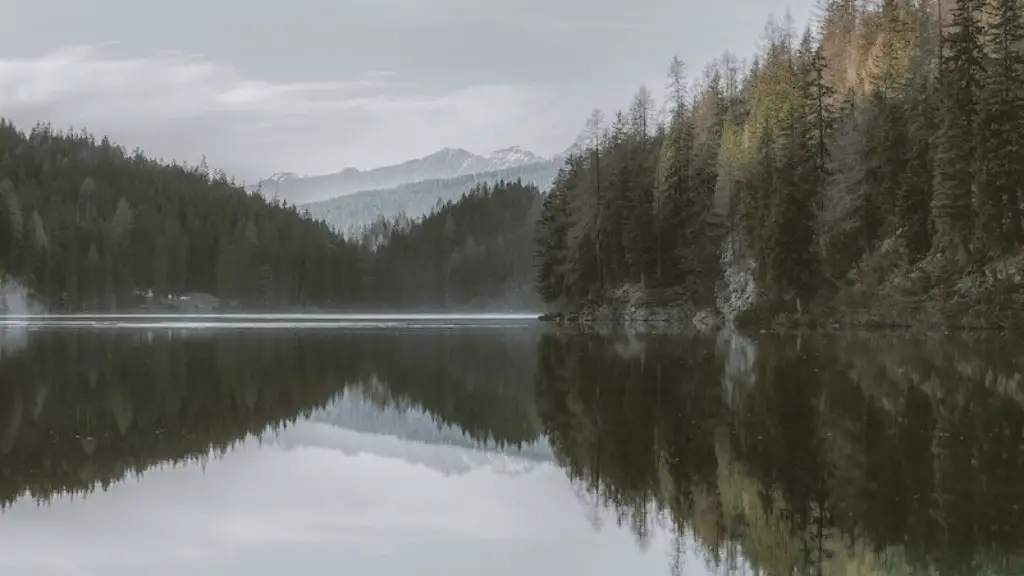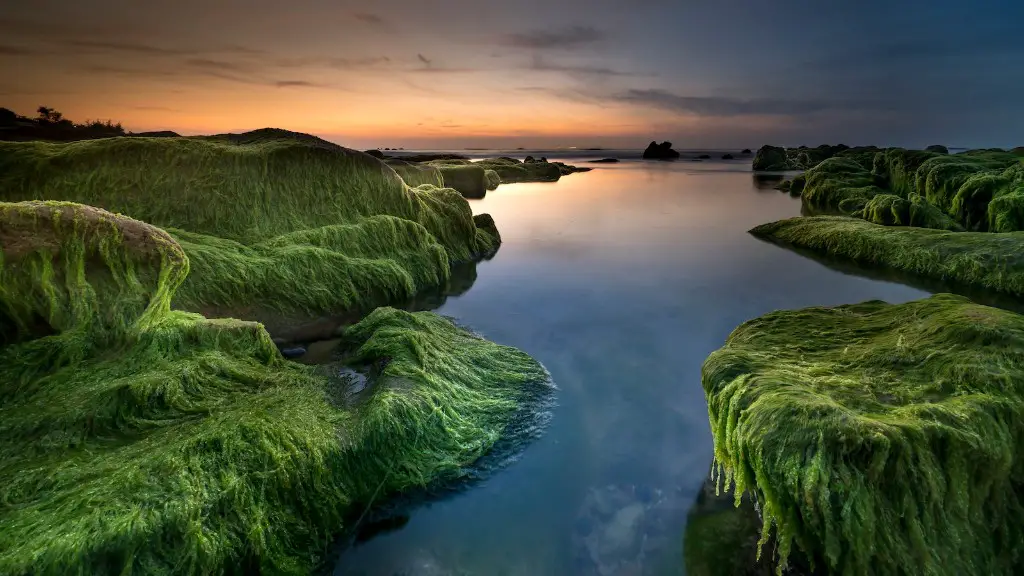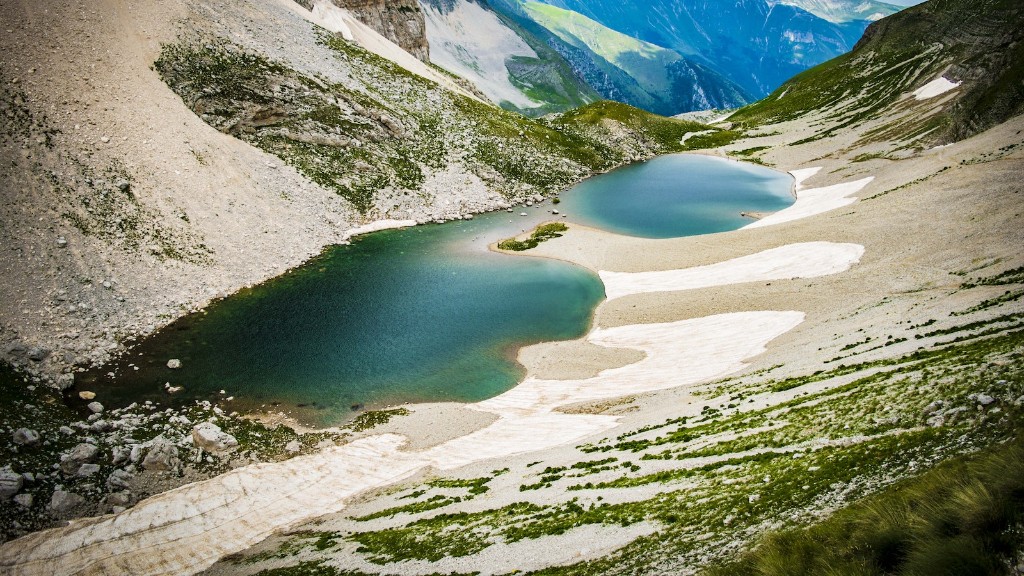Venting of hot, pressurized steam and ash from Mount Mazama created a large hole or caldera in the mountain about 7,700 years ago. This event was the largest and most explosive volcanic eruption in North America in the last 500,000 years. It produced about 150 times as much ash as the 1980 eruption of Mount St. Helens. So much ash fell that it blanketed an area of at least 20,000 square kilometers (7,700 square miles) and possibly much more. The ash that fell in what is now Crater Lake filled the caldera to a depth of more than 800 meters (2,600 feet).
The volcanic events that formed Crater Lake Oregon were the eruption of Mount Mazama and the collapse of the caldera.
What process led to the formation of crater lakes?
Calderas are large, crater-like depressions that form following the eruption of a volcano. They are formed when molten rock (lava) and ash are explosively ejected from the volcano, causing the collapse of the volcano’s cone. This results in a large basin that is surrounded by steep, rocky walls. Calderas can be several kilometers wide and are often filled with water, forming lakes.
Stratovolcanoes, also called composite volcanoes, are made up of layers of lava flows and pyroclastic deposits. They tend to have a steep-sided conical form and highly explosive eruptions. Earlier eruptions built Mount Scott, which lies east of Crater Lake. As time continued, volcanoes began growing to the west, building up layers of lava flows and pyroclastic deposits.
What volcanic events formed Crater Lake Oregon about 7600 years ago
Crater Lake is a beautiful sight to behold. It is a volcanic depression that formed by the collapse of a 3,700 m (12,000 ft) volcano known as Mount Mazama. This massive eruption occurred approximately 7,700 years ago and changed the landscape all around the volcano. Today, Crater Lake is a popular tourist destination for its stunning views and unique geology.
The lake is located in Crater Lake National Park The chain of volcanoes of the High Cascades approximately parallels the plate boundary, and is related to subduction of the small Juan de Fuca and Gorda plates beneath the North American plate. Crater Lake is the deepest lake in the United States and is formed in the remains of a destroyed volcano. The lake is beautiful and serene, and a popular destination for tourists.
Was Crater Lake formed by a meteor?
Crater Lake was not formed by a meteor, as is often assumed. The lake is actually the result of a volcanic eruption and subsequent collapse. Mount Mazama, a 12,000 foot volcano, erupted and collapsed over 7,000 years ago, creating the large caldera that now holds Crater Lake. The lake is filled with rain and snowmelt, and is one of the most iconic natural formations in the United States.
Crater Lake is one of the most beautiful and peaceful places on Earth. It is also one of the most unique. Crater Lake lies in a basin, or caldera, formed by collapse of the Cascade volcano known as Mount Mazama during a violent, climactic eruption about 7,700 years ago. The eruption ejected so much ash and debris that it blanketed much of North America and parts of the Pacific Ocean. The debris also caused the atmosphere to cool, leading to a period of global cooling known as the Mazama Pumice Epoch.
What was the main cause of the depression or crater at Crater Lake?
Crater Lake is a gorgeous blue lake that is partially filled with a 1,200-meter deep caldera. The caldera was formed by the collapse of ancestral Mount Mazama during a violent eruption of 50 cubic kilometers of magma about 7,700 years ago (6,845 +/- 50 14C years before present). The lake is a popular destination for tourists and is a beautiful sight to behold.
Crater Lake was formed about 7000 years ago when the caldera of Mount Mazama collapsed following a major eruption. The eruption produced large amounts of ash and pyroclastic flows, which filled the caldera and formed the lake.
Is Crater Lake a live volcano
While Crater Lake is an active volcano, it hasn’t erupted in 4,800 years. Thelen said he doesn’t think it’s going to erupt anytime soon. The Volcano Observatory also noted that although Crater Lake is an active volcano, there is no current danger.
The Mount St Helens major eruption of May 18, 1980 was a devastating event that killed 57 people, destroyed 200 homes, 47 bridges, 15 miles of railway, and 185 miles of highway. It was the deadliest and most economically destructive volcanic event in US history.
How did Crater Lake Oregon form quizlet?
The lake was formed after the collapse of an ancient volcano, posthumously named Mount Mazama This volcano violently erupted approximately 7,700 years ago That eruption was 42 times as powerful as the 1980 eruption of Mt. St. Helens in Washington state. The eruption blew off the top of the mountain, leaving a massive crater that eventually filled with rain and snowmelt. Over time, the crater became what we now know as Crater Lake.
The Crater Lake in Oregon was formed about 5-6 thousand years ago when accumulation of rain and snow filled the caldera. It is believed that it took about 250 years for the caldera to fill to its present-day lake level. The lake level is maintained by a balance between precipitation and evaporation, plus seepage.
Which causes the formation of this crater *
Volcanoes are mountains, but they are very different from the mountains that we typically think of. Volcanoes are mountains that are formed by the eruption of hot molten rock, ash, and gas from the earth’s surface. When these materials are ejected from the volcano, they create a crater. Craters can be formed by the outward explosion of rocks and other materials from a volcano, or by the inward collapse of a volcano’s magma chamber.
The asteroid that created the Chicxulub crater is thought to have been between 10 and 15 kilometers wide. The velocity of its collision caused the creation of a much larger crater, 150 kilometers in diameter. The crater is the second-largest crater on the planet.
How big was the meteor that formed Crater Lake?
The Barringer Meteor Crater is a large impact crater that was formed 49,000 years ago by a large iron asteroid. The crater is nearly a mile wide and 570 feet deep. The impact of the asteroid caused a massive explosion that excavated 175 million tons of rock. The crater has had a significant impact on the local environment, causing changes in the landscape and climate.
The asteroid that produced the impact was likely in the range of 100 to 170 feet (30 to 50 meters) across and it excavated 175 million metric tons of rock. The wide perspective above gives a sense of the crater in context with the surrounding area.
Conclusion
The volcanic event that is responsible for the formation of Crater Lake in Oregon is the eruption of Mount Mazama. This massive eruption happened about 7,700 years ago and resulted in the collapse of the volcano.
Crater Lake Oregon was formed by a volcanic eruption that happened about 7,700 years ago. The eruption created a caldera, or crater, that was approximately 4 miles wide and 2,000 feet deep. Over the years, the caldera has filled with water from rain and snowmelt, creating the beautiful and serene Crater Lake.
